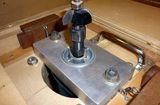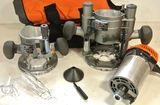John Heisz's router table
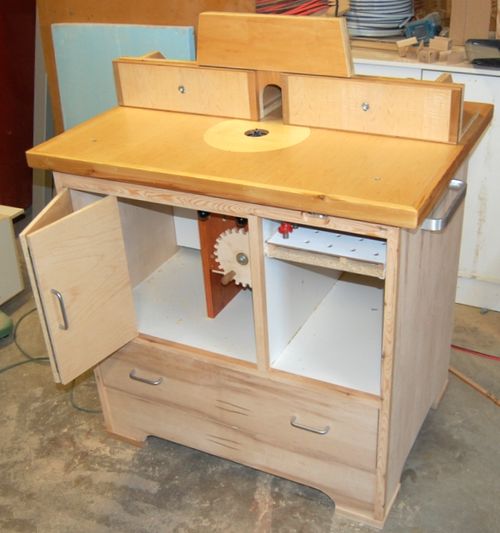
Recently, one of my trips took me past John Heisz's home. I was eager to see his homemade table saw in person, so I took a slight detour to have a look.
John also showed me his homemade router table. The router table incorporates a built in router lift, inspired by the design of my router lift. Specifically, the arrangement of the right angle gearing and threaded rod to raise the router up and down.
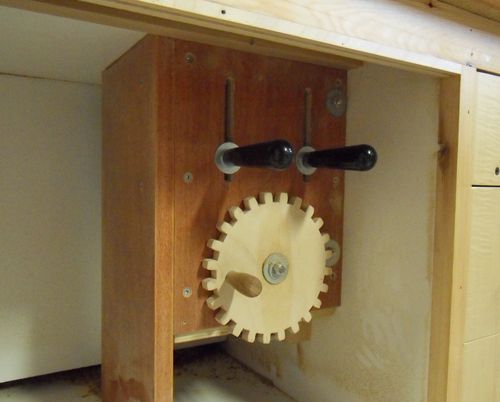 He also uses a 16 TPI threaded rod for the vertical motion, but his gear ratio
is 24:12 instead of 20:12 as it is on mine. This means he gets exactly two screw
turns per crank turn, raising the router by exactly 1/8" with each clockwise
turn of the crank.
He also uses a 16 TPI threaded rod for the vertical motion, but his gear ratio
is 24:12 instead of 20:12 as it is on mine. This means he gets exactly two screw
turns per crank turn, raising the router by exactly 1/8" with each clockwise
turn of the crank.
Because the gearing and threaded rod are exactly centered, it would have been difficult to place a locking knob in the center as well, so he opted for two locking knobs on either side instead. The two black plastic handles are the locking knobs, turned clockwise to lock the router in place.
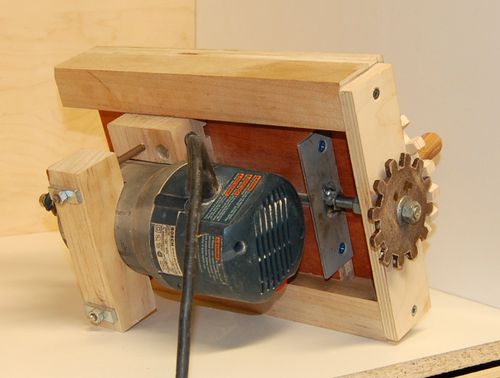 Unlike me, John has a welder and some metalworking equipment. So instead of embedding a
nut in a block of wood, he just welded one onto a strip of metal.
Unlike me, John has a welder and some metalworking equipment. So instead of embedding a
nut in a block of wood, he just welded one onto a strip of metal.
He used hardboard instead of wood for the small gear. This makes it easier to get the gears to mesh, although the downside is that the board is too thin to use a T-nut on. So tightening it between two nuts and washers is more important.
The router is clamped between two blocks of wood instead of the hose clamps I used on mine. I thought of using a similar approach for my router lift, but it's a bit bulkier, and the hose clamps worked really well in my slot mortiser, so I used the same approach on my router lift.
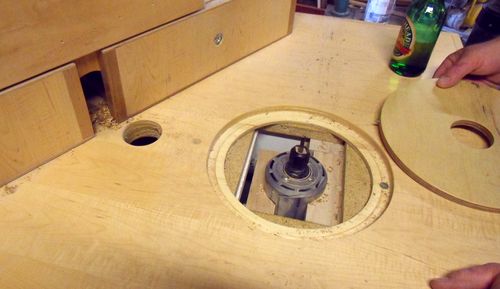 This picture shows a really clever aspect of this router table.
This picture shows a really clever aspect of this router table.
There is a hole in the table behind the router. A channel in the fence connects this hole to the opening at the front of the fence.
The dust extractor is then hooked up to the cabinet. With the front cabinet door closed tightly, air is sucked in through this hole, effectively sucking chips away through the fence without having to attach a hose to the fence.
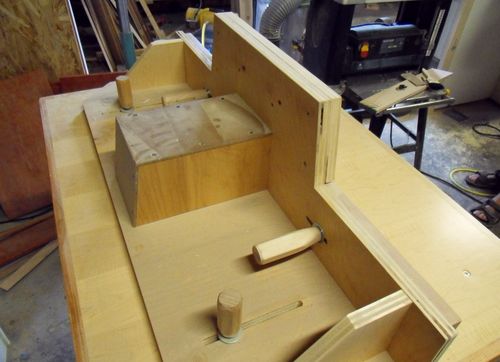 This shows the channel on the back of the fence.
This shows the channel on the back of the fence.
Everything on John's table is dimensioned a little larger than it is on mine. I had limited space on the right of my table saw to work with, so I was aiming for compactness with my design
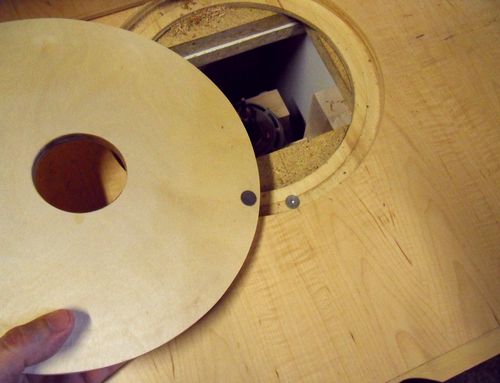 The air blowing out of the front of the router was enough to actually lift
up the router table insert - A problem I encountered as well. Like on my design, he
solved this with a magnet to hold the insert down. But where I used a door catch magnet,
John embedded a rare earth magnet on the edge of his insert, which is attracted to the
head of a large screw in the table.
The air blowing out of the front of the router was enough to actually lift
up the router table insert - A problem I encountered as well. Like on my design, he
solved this with a magnet to hold the insert down. But where I used a door catch magnet,
John embedded a rare earth magnet on the edge of his insert, which is attracted to the
head of a large screw in the table.
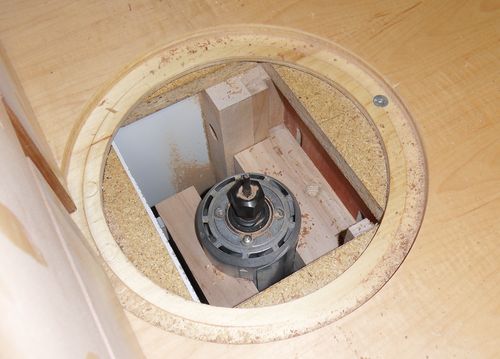 Looking into the table from the top. The router lifts far enough to facilitate above
the table bit changes.
Looking into the table from the top. The router lifts far enough to facilitate above
the table bit changes.
Note that the vertical motion of the router mount is guided by the edges, whereas on my design, I have two square guide rails between my pieces of plywood.
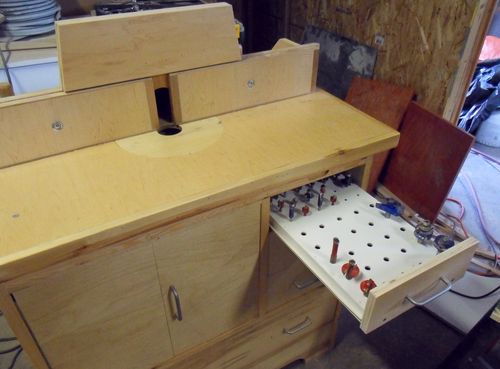 Drawers on the right side of the table are used for router bit storage.
Drawers on the right side of the table are used for router bit storage.
See also:
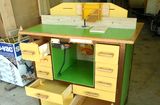 Rudolf's router table
Rudolf's router tableMore reader projects
Back to my Woodworking website
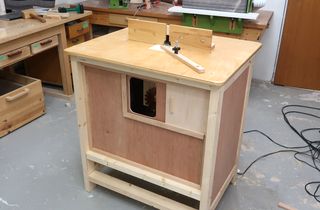 A router table that's its own dust collector
A router table that's its own dust collector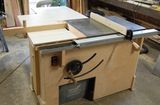
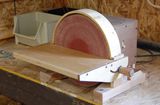
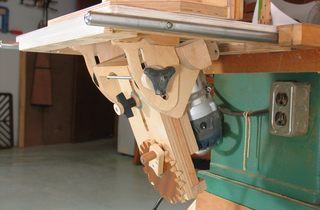
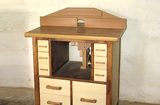 Dejan Kovac's
Dejan Kovac's